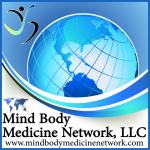An epidemic of chronic pain and related disorders is occurring in the United States and around the world. Investigators estimate that 113 million individuals have chronic pain in the United States, and this number is increasing.

Howard Schubiner, MD
Author of “Unlearn Your Pain”
The traditional biomedical model attempts to identify an underlying local and structural cause of pain. The efficacy of this approach has not been demonstrated for these chronic painful conditions however, as is clear when one considers the number of people who suffer with these conditions on a regular basis. The disorders considered in this article exclude those with objective evidence of structural disease, such as cancer, fractures, and inflammatory and infectious conditions.
Little doubt exists that genetic predispositions occur with many conditions, such as migraine, anxiety and depression. However, studies have shown that life events are required to trigger these conditions, that is, to cause expression of underlying genetic predispositions. Because of the inability to identify and treat the underlying cause, attention has shifted to pain management. However, biomedical approaches to pain management, including pain medications, injection techniques, and surgical and chemical ablations, have also not been shown to be efficacious. Clearly, a new model for these disorders is needed. This article will describe a mind-body model in which these disorders are considered to be related to individual reactions to stressful (and even traumatic) events and unresolved emotions.
Clear evidence indicates that pain can originate in the absence of a tissue disorder in the area where pain is being felt as seen in phantom limb syndrome. A study by Derbyshire et al confirmed that pain initiated by the brain is identical to pain originating in peripheral tissues.
Learned pain pathways can develop after an injury (even a mild one) or can be created during times of significant stress and emotional reactions. Although most injuries heal within a reasonable amount of time, pain pathways can persist (become “wired”), thus creating chronic pain that is often refractory to medical therapies. These pain pathways are often very specific and can involve discrete or large areas of the body. Pain induced by psychophysiological (PPD) processes frequently moves or changes, as opposed to the pain caused by a specific injury or disease process.
Once a biomedical condition has been ruled out, the next step is to understand the linkages between priming and triggering (bio-psycho-social) events and the onset of PPD symptoms. Howard Schubiner, MD, who is the author of the article this blog is recreating, as well as his book, Unlearn Your Pain provides an evidence-based protocol that can assist clinicians and the lay public to become educated regarding the nature of PPD’s. The Unlearn Your Pain program consists of a mixture of cognitive-behavioral, mindfulness, and emotional expressive techniques. The author’s program has been shown to increase an internal locus of control (i.e. participants begin to believe that their thoughts and actions are capable of reversing their PPD symptoms). Finally, individuals who have endured significant childhood and adult stressors and who have suffered with chronic pain often have a negative view of themselves and low levels of self-esteem and self-efficacy. Therefore, an overarching theme for guiding individuals with PPD to health is the development of love and kindness toward oneself. This can be accomplished by positive affirmations, by meditations and visualizations, and by encouraging participants in the program to stand up for themselves and take time to do things for themselves.
Dr. Schubiner’s webinar on the Mind Body Medicine Network, LLC entitled “Chronic Pain and Associated Symptoms: Healing the Mind in Order to Heal the Body,” on Sunday, November 11, 2012 will be an ideal way for clinicians and the lay public to more specifically learn and apply these effective chronic pain reduction (and in many cases, pain eliminating) and life enhancing techniques in an interactive format. For those people that register for the webinar, a free audio and video recording will be available as an unlisted URL link on YouTube. To get more information and to register for the webinar with Dr. Schubiner, please click on the following link at:
http://www.mindbodymedicinenetwork.com/Webinars.html

(Blog was taken from excerpts from Dr. Howard Schubiner’s article in the Expert Consult Book, wwww.expertconsultbook.com, Chapter 100 – Emotional Awareness for Pain, In Rakel, Integrative Medicine, 3rd Edition, 2012. Ed Glauser, LPC developed blog from this article)

